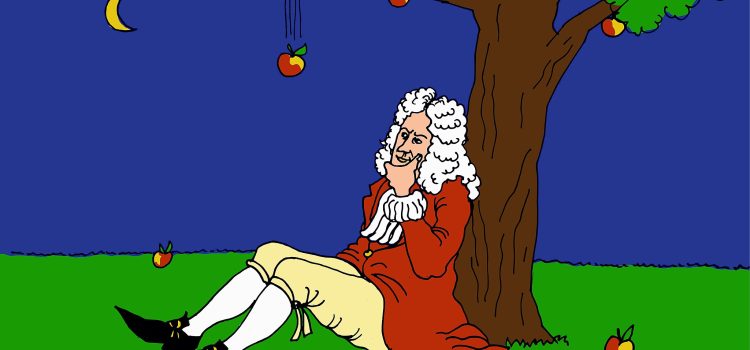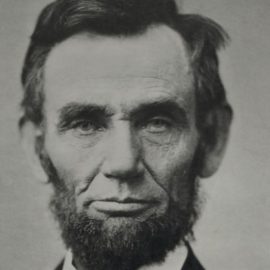
What patterns do breakthrough thinkers notice that others miss? How do some people make connections that revolutionize entire fields of knowledge?
In his book, Seeing What Others Don’t, Gary Klein explores what causes breakthroughs in thinking. His research reveals fascinating examples of insights in science, medicine, engineering, architecture, literature, and more.
Keep reading to discover how these examples of insight demonstrate what sets breakthrough thinking apart.
Image credit: Alexander Borek via Wikimedia Commons (CC BY-SA 4.0)
Examples of Insights
Klein shares multiple examples of insights and draws on decades of research studying how people make decisions in high-stakes environments to reveal the three distinct paths that lead to insight: noticing contradictions, making unexpected connections, and pushing through moments of creative desperation.
These examples of insight illustrate Klein’s framework for understanding and cultivating insights, showing how these principles have shaped breakthrough thinking across history. Whether you’re solving technical problems, leading a team, or seeking creative breakthroughs, these examples show how some see what others miss.
Examples in Science
When Isaac Newton developed his laws of motion and gravity, he didn’t merely refine existing theories; he created an entirely new way of understanding how the universe works. Klein notes that this discontinuous nature explains why insights often feel like they arrive fully formed, rather than through conscious reasoning. They represent not just new information, but an entirely new framework for understanding. It’s like suddenly seeing a 3D image emerge from what previously looked like random patterns: Once you see it, you can’t unsee it, and your understanding is permanently transformed.
| How Insights Have Transformed the Way Physicists Understand the Universe Physicist Michael Dine explains in This Way to the Universe that each major breakthrough in physics, such as Newton’s insights about motion and gravity, came when scientists stopped trying to fit new observations into old frameworks and instead embraced entirely new paradigms. Newton couldn’t just add mathematical laws to a universe governed by divine whim; he had to see the cosmos as fundamentally mathematical. Similarly, scientists Michael Faraday and James Clerk Maxwell—who discovered the electromagnetic field—couldn’t just add fields to a world where forces acted through contact: They had to reimagine space as filled with invisible influences. Albert Einstein couldn’t just modify how time worked: He had to reconceptualize space and time as aspects of a single fabric, leading to the theory of relativity. |
A challenge emerges when we try to share our insights with others and face resistance from people who haven’t experienced the same shift in understanding. The more an insight challenges established practices or beliefs, the more evidence it requires to gain acceptance. This explains why Edwin Hubble faced such resistance when he discovered the Andromeda “nebula” was actually a galaxy far outside our own Milky Way. His insight that the universe extended far beyond our galaxy contradicted the prevailing belief that our galaxy constituted the entire universe. It took years of careful observation and documentation before the astronomical community accepted this revolutionary new understanding of cosmic scale.
Klein demonstrates that contradictions can lead to insights. An example of this is found in Barbara McClintock’s Nobel Prize-winning discovery of “jumping genes.” She encountered evidence that directly challenged the established wisdom of her field, observing corn kernels showing color patterns that violated the accepted rules of genetic inheritance. Instead of trying to explain away the evidence that didn’t fit existing theories, McClintock followed her observations wherever they led. When her 1951 presentation of her findings met with skepticism and even hostility, she didn’t abandon her research. Instead, she noted, “I just knew I was right. Anybody who had had that evidence thrown at them with such abandon couldn’t help but come to the conclusions I did about it.”
Sometimes we find breakthrough insights only when we’re backed into a corner. Klein explains that this is the creative desperation path to insight. We go down this path when the pressure of an impossible situation forces us to abandon our usual thinking patterns and search for a novel way to solve the problem. An example of the creative desperation path to insight is the Apollo 13 crisis, when NASA engineers had to figure out how to filter carbon dioxide in the Lunar Module using only the limited materials available to the astronauts on the spacecraft. Their insight—creating a makeshift filter using plastic bags, duct tape, and a hose from a spacesuit—came from the desperate need to solve an otherwise impossible problem.
| Bell Labs: The Structure of Innovation At Bell Labs, under Mervin Kelly’s leadership, the building was specifically designed to encourage random encounters between researchers from different disciplines. Floating walkways and conversation areas were meant to spark unexpected connections—literally building serendipity into the architecture. The Bell Labs example reveals how organizational structures can nurture insight. When researchers noticed unexpected behavior in semiconductors, they were given resources to investigate further, leading to the invention of the transistor. Researchers were given freedom to explore questions that interested them, even when immediate applications weren’t apparent. The organization valued both theoretical breakthroughs and practical applications. |
Examples in Medicine
Klein uses the example of Dr. Michael Gottlieb’s discovery of AIDS. When Gottlieb encountered patients with severe immune deficiencies that couldn’t be explained by any known condition, he faced a choice: try to force these observations to fit existing medical frameworks, or accept that he was seeing something entirely new. By being willing to discard old assumptions about how immune diseases worked, he recognized that he was witnessing the emergence of a new disease—a realization that transformed our understanding of immune disorders and viral infections.
Insights often demand uncomfortable or unconventional actions. It’s not enough to have the breakthrough thought; we must be willing to act on it, even when doing so feels risky. Consider the example of physician Ignaz Semmelweis’s insight about handwashing in medical settings: In 1846, he realized doctors were spreading deadly infections by moving directly from performing autopsies to delivering babies without washing their hands. While this insight seems obvious today, acting on it required Semmelweis to tell his colleagues—respected physicians—that their actions were killing their patients. He had to risk his professional relationships and reputation to implement what we now know was a lifesaving practice.
Klein explains that a great example of finding an insight through a challenge to existing knowledge is the story of Barry Marshall, the doctor who discovered that ulcers are caused by bacteria. The medical establishment “knew” that bacteria couldn’t survive in stomach acid and that ulcers were caused by stress and diet. But Marshall kept finding H. pylori bacteria in his ulcer patients—which directly conflicted with accepted wisdom. Ultimately, he famously had to infect himself with H. pylori to prove his theory. Klein notes that, instead of dismissing this evidence, Marshall followed it to a Nobel Prize-winning insight that revolutionized treatment for millions of people.
The traditional model of creative insight, developed by Graham Wallas in 1936, suggests that breakthroughs follow a fixed sequence: preparation, incubation, illumination, and verification. While this can happen—especially in the creative desperation path—Klein found that many crucial insights arrive without any conscious preparation. Alexander Fleming wasn’t trying to discover antibiotics when he noticed the bacteria-free zone around some mold in his petri dishes. But his openness to the unexpected proved incredibly valuable, perhaps more valuable than preparation could have been in that scenario.
Examples in Mathematics
The example of mathematician John Nash, portrayed in the 2001 film A Beautiful Mind, illustrates how Klein’s research debunks three common myths about insight. While the Hollywood version necessarily dramatizes some “eureka” moments (such as Nash’s breakthrough about game theory coming to him while watching his friends compete for a woman’s attention in a bar), the real Nash’s journey shows how insights actually work. Nash’s most important insights about equilibrium theory developed gradually over years. His early work on bargaining problems slowly evolved into his revolutionary insights about non-cooperative games.
Like Darwin’s understanding of natural selection, Nash’s greatest contributions came through patient observation and incremental understanding, not just sudden flashes of inspiration. Additionally, some of Nash’s most important insights came when he wasn’t deliberately working toward them. His insights about governing dynamics emerged partly from observing everyday human behavior—such as watching people navigate through crowds—rather than from formal mathematical preparation. Nash’s ability to see mathematical patterns in daily life didn’t rely on constant focused effort—though it could have been related to his schizophrenia.
Klein’s systematic approach to cultivating insights resembles mathematician Henri Poincaré’s famous account of mathematical discovery. In his 1904 work The Foundations of Science, Poincaré described how his mathematical breakthroughs emerged through a process that mirrors Klein’s recommendations. First, Poincaré emphasized that major insights often come when we’re engaged in seemingly unrelated activities. His own breakthrough about Fuchsian functions came while stepping onto a bus during a geology excursion, demonstrating Klein’s point about gathering diverse experiences and remaining open to unexpected connections.
Additionally, Poincaré described how mathematical insights emerge from alternating between focused work and periods of unconscious processing. He noted that “sudden illuminations” only come after periods of conscious work have “set agoing the unconscious machine,” and often arrive during breaks or diversions—like walks along the seashore. He noted that he could spend days working on a problem and apparently making no progress, and it was only then that inspiration would strike. This illustrates Klein’s advice about gathering information before looking for patterns and remaining open to insights arriving through unexpected paths.
More Examples of Insights
George de Mestral’s expertise in engineering and his love of the outdoors led him to invent Velcro: When de Mestral went hiking, he noticed burrs stuck to his clothes and his dog’s fur. Instead of just brushing them off, he got curious about how they adhered so strongly. So he examined them under a microscope—and saw a hook-and-loop structure that he realized he could replicate in fabric.
James Joyce’s Ulysses demonstrates how connection-based insights can transform entire artistic forms: Where scientific insights typically build on previous knowledge to solve specific problems, Joyce’s literary connections created an entirely new way of seeing how narrative could work. Joyce took Homer’s ancient epic about a warrior’s decade-long journey home and connected it to a single day in the life of an ordinary Dublin advertising salesman, exemplifying Klein’s recommendations:
Where scientists might draw connections between related fields, Joyce sought the widest possible range of sources—Greek mythology, Catholic liturgy, Dublin street songs, newspaper advertisements, scientific theories, medical texts, and the latest developments in psychology. Rather than using patterns to solve problems, Joyce used them to create new meanings, showing how mythic patterns could reveal the extraordinary within ordinary life. Additionally, his analogies (like turning a newspaper office into the Cyclops’s cave) weren’t meant to clarify understanding, as scientific analogies are, but to create multiple layers of meaning for readers to explore.
The result wasn’t just a great novel but a new way of thinking about literature itself. Where scientific insights often aim to simplify and clarify, artistic insights can purposefully complicate and deepen our understanding by creating new patterns of meaning—an approach that continues to influence writers such as Margaret Atwood and Madeline Miller, who use ancient myths to illuminate modern experiences in unexpected ways.
| The Power of Structure: Lessons From the Bauhaus The Bauhaus school of design (1919-1933) is an example of how organizations can either suppress or nurture insights. Under the leadership of its founder, German architect Walter Gropius, the Bauhaus deliberately created an environment that challenged all three organizational barriers Klein identifies. While most art schools of the time followed rigid curricula, Gropius insisted on keeping the Bauhaus “in suspension, in flux.” He hired teachers before fully understanding their methods and encouraged experimental approaches. This embrace of uncertainty led to breakthrough innovations in design, from Marcel Breuer’s tubular steel furniture to new approaches in textile design. Instead of focusing on achieving perfection and eliminating errors, the Bauhaus created an environment where students were encouraged to experiment with materials in the preliminary course, and workshops emphasized process over product. Even the school’s famous parties and festivals were seen as forms of creative exploration. This tolerance for experimentation led to revolutionary insights about how art, craft, and industry could merge. Additionally, the Bauhaus replaced traditional academic hierarchies with what Gropius called “masters, journeymen, and apprentices.” Teachers were often practicing artists without formal teaching credentials, and students sometimes taught themselves and each other, particularly in the textile workshop. This fluid structure allowed insights to emerge from unexpected sources and spread rapidly through the community. The results were revolutionary. In just 14 years, the Bauhaus transformed how we think about design, architecture, and education. However, its insight-friendly environment proved threatening to those who valued predictability and control: The Nazi regime shut it down precisely because it was too open to new ideas and ways of thinking. |






